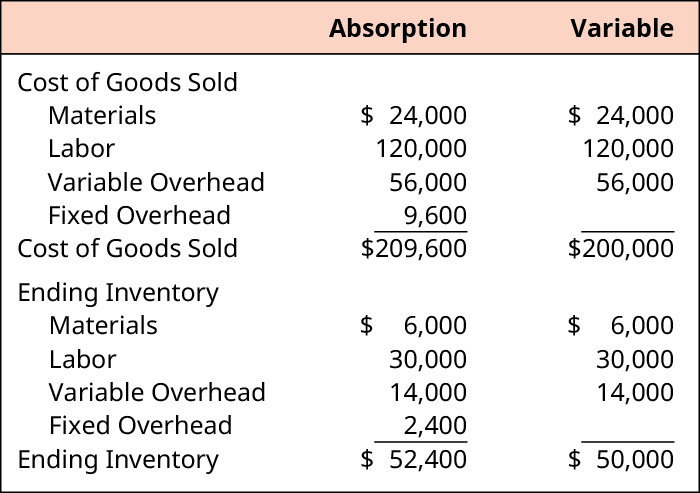
Regardless of how you calculate your payment terms, communicate them clearly to your customers to avoid confusion or late payments. Businesses offer net 30 terms to their customers in their invoices in their due dates. If an invoice to a customer is dated March 15th and the payment due date is April 15th, then a business has offered that customer net 30 payment terms. Despite offering generous net terms, expect that not every client will pay you on time. This can lead to cash flow problems and negatively impact your bottom line.
- On the contrary, if the owner of a startup hires a contractor to develop content for their website, Net 15 might be more appropriate, as it’s likely a cheaper job, requiring just one person.
- In effect, the difference between these two prices reflects the discount lost, which can be reported as a percentage.
- To assist you in determining the appropriate same payment terms for your firm, we investigated several payment choices that are suitable substitutes for Net 30 terms.
- In the case of net 10, it is within 10 days—suitable when you expect an early payment.
- For example, PayPal’s Pay in 4 option allows customers to pay in four interest-free installments over six weeks.
In some cases, staying on top of your vendor and supplier invoices can also save you money. Learn to get paid faster in accounts receivable and save money in accounts payable with a clearer understanding of net 30 and early payment discounts, such as 2/10 net 30. While smaller freelancers and vendors are usually most comfortable with no more than Net 45 terms, larger businesses will sometimes even extend Net 90 terms. This is because large businesses usually have enough cash on hand to survive not getting paid by a client for 90 days. The right invoice payment term differs by company size and the type of products or services being offered.
Alternative early payment discount terms to 2/10 net 30
Or, the buyer uses the product in such small increments that they need the extra time to make their money back for the purchase. For those who have just heard about net 30, explanations are needed to understand why it is so commonly used. Net 30 payment terms, with a discount for early payment, induce the buyer to pay earlier. Most of the time, net 30 means the customer must pay within 30 days of the invoice date. Most notably, supply chain finance solutions offer a way of unlocking the discount with third-party funding.
In the worst-case scenario, some customers may not end up not paying their account due at all. This may sound a bit extreme, but non-payment on net terms is, unfortunately, common on higher-risk accounts. However, this risk can be offset by enduring the rise of nonpayment and bad debts are managed properly. If you experience a lot of write-offs, this may be a sign that your credit checking and credit decisioning programs need to be reviewed and redesigned.
Net 30: What It Means, How Businesses Use It
Some businesses offer discounts that encourage a customer to settle their account before the net period is over. If an invoice payment term is “5% 10 net 30,” this means the client can receive a 5% discount if their invoice is paid within 10 days; otherwise they must pay the full amount within 30 days. As part of optimizing your cash flow, it’s important to consider how much time you will give your clients and customers to pay your business upon receipt of a product or invoice.

To facilitate this, customers are provided with net 30 payment terms, which offer a brief credit period following the purchase of goods or services. Net 10, net 15 and net 30 are not only common invoice payment terms, they also function as a form of credit. It implies that goods and services have been provided and that the payee has been credited for those until a 30 day time period has passed, or in the case of net 10, within 10 days. The most common invoice payment terms include Net 7, Net 15, and Net 30. Even if you have enough cash on hand, if you only rely on a few large customers, you may run into cash flow problems if just one payment is late. If you have a large number of clients, however, you’ll be in a much better position to compensate for multiple late payments.
What do net 30 payment terms mean?
While net 30 payment terms are a common approach for business transactions, there are other payment methods that might be more suitable to your situation. If a buyer is unaccustomed to delayed payment terms, they may not understand when exactly their payment is due. This can lead to honest payment mistakes that sour the relationship, or it can create more work for your team in explaining exactly what the terms mean. You’ll have to weigh the pros and cons of any credit term you might offer. If you can afford to do it, and doing so will help your business operate or grow, net 30 can be beneficial. Even if you charge pay late fines and offer rewards for early payment, your customers may still pay beyond the payment due date.
Markets News, Aug. 22, 2023: Tech Buoys Nasdaq; Nvidia, Banks … – Investopedia
Markets News, Aug. 22, 2023: Tech Buoys Nasdaq; Nvidia, Banks ….
Posted: Tue, 22 Aug 2023 21:16:00 GMT [source]
In this comprehensive guide, we explore everything your business needs to know about net terms (also known as credit terms). We deep dive into digital net terms platforms, explore the advantages and disadvantages of net payment terms, and explain how to launch an effective payment terms program. Invoice factoring is a process in which you sell an invoice to a factoring company, and in exchange, you receive the amount that you are owed on the invoice.
What are common payment terms for invoices?
If you own a small business and wish to use net 60, we recommend that you limit your clients to those who are loyal, trustworthy, and reputable. It can help a new business grow in the long term and incentivize customers for paying early. When customers sign an invoice that reads “Net 15,” they commit to paying you in full within 15 days of receiving the paperwork. Net 15, like net 10, is an appropriate length for enterprises with little cash flow. Consider using this basic phrase for bills from new clients and late payers. “Net 30 EOM” is used by businesses on their invoice to receive payments 30 days after the end of the month.

Sales made on credit are essentially like offering an interest-free loan to the customer. In this sense, it represents a cost to the seller and motivates the seller to try to collect receivables as soon as possible. It also represents a benefit to the customer, who is motivated to postpone payment as long as possible. When a customer can hold onto cash it owes to a supplier, the customer is benefiting from an interest-free loan from the supplier via the credit sale.
It could also prevent you from investing that working capital in other important areas of your business that may be more vital. When it comes to 2/10 net 30, it’s important to weigh whether paying your bills within that 10-day timeframe is within your business’s best interest. Keep in mind, however, that if you don’t meet the payment terms and pay within that 10-day window, you’ll have to pay the entirety of that invoice with no discount. Remember that this includes weekends and holidays, not just business days. Let’s say you purchased products on the 10th of the month for $500 and you’re invoiced for that amount on the 15th.
However, customers benefit more by receiving products or services without paying upfront. It also allows them to make returns or cancellations without any financial commitments. While setting a due date is standard practice and should be adhered to by customers, it doesn’t always rule out the situation of late payments or bad debts. Automated accounts receivables best practices can alleviate a company’s process pains and take the complexity out of providing net terms.
With Hiveage I’m able to spend more time on the tasks that will actually grow my business without getting bogged down by non-billable administrative activities. Trade credit has its ups and downs, as well as a process by which you introduce them, so understanding the full picture here is vital to recognizing whether or not you are wise to use credit. There are two significant differences between “net 30” and “30 days”. Net 30 terms can be a powerful tool for both selling and buying in business.
The net 30 payment term is commonly used by medium to big-sized companies with good working capital and cash to handle day-to-day expenses. These companies could offer their customers extended trade terms of net 30, 60, or sometimes 90. But, depending on the industry you operate in, you may see more or fewer days available as part of your credit terms agreement.
Net 30 payment terms are among the most common invoice payment terms, but whether they’re ideal for you depends on your business, goals, and other factors. On this page, you’ll learn what net 30 terms are, get an overview of similar terms, and explore alternatives. Also, if you are the seller offering trade credit and the customer takes advantage of the discount, know that your company will reduce its revenue in the income statement. In some instances, it may not be in the best interest of your business’s cash flow to pay your bills early. Perhaps you’re behind in your account receivable process and paying early could put you in the red.